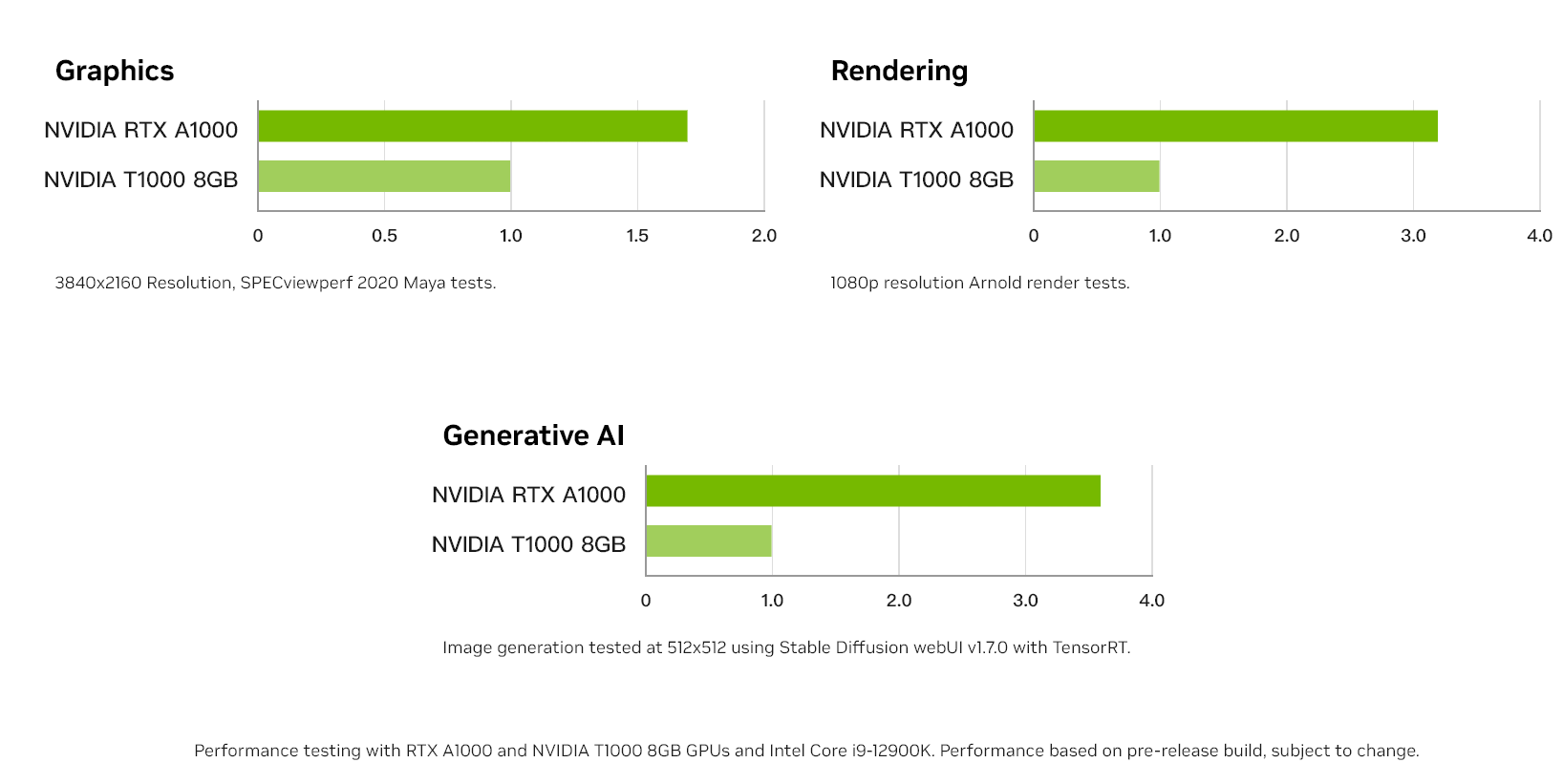Nvidia launches RTX A400/A1000 professional GPUs and introduces AI computing
Nvidia has recently launched two new desktop GPUs, the RTX A400 and RTX A1000. Based on the Ampere architecture, it is the first to introduce the Tensor Core and RT Core into entry-level desktop workstation professional graphics cards, which can accelerate artificial intelligence (AI) operations and meet rendering and ray tracing needs such as CAD and 3D modeling.
The RTX A400/A1000 is designed to replace the T1000 and T400 professional graphics cards launched in 2021, introducing AI processing power into the product line for the first time. The TGP power consumption is 50W for both, and both are single slot designs. The RTX A400 has 768 CUDA cores, 24 3rd generation Tensor cores, and 6 2nd generation RT cores, with a GPU acceleration frequency of 1755MHz and equipped with 4GB 64bit GDDR6 graphics memory. In terms of performance, the FP16 floating-point operation performance of A400 can reach 21.7 TFLOPS. Officially, the RTX A400 can directly run AI applications such as intelligent chatbots on workstations, greatly improving work efficiency. At the same time, the product also supports real-time ray tracing, helping to build realistic 3D rendering effects for creators. In addition, the A400 also has four display output interfaces, which are very suitable for industries such as finance and transportation that require high-density visualization.
The NVIDIA RTX A1000 graphics card is equipped with 2304 CUDA cores, 72 third-generation Tensor cores, and 18 second-generation RT cores. The GPU acceleration frequency is 1460MHz, and it is equipped with 8GB 128bit GDDR6 graphics memory. The FP16 floating-point operation performance of this product can reach 53.8 TFLOPS. The RTX A1000 is designed for users who require higher performance, with significant improvements in generative AI and ray tracing performance. Compared to the previous generation of products, tools such as Stable Diffusion have a generation speed that is more than three times faster, while 18 RT cores can also increase the rendering speed of professional workflows such as CAD, 3D modeling, and video editing by three times.
The NVIDIA RTX A1000 graphics card is equipped with 2304 CUDA cores, 72 third-generation Tensor cores, and 18 second-generation RT cores. The GPU acceleration frequency is 1460MHz, and it is equipped with 8GB 128bit GDDR6 graphics memory. The FP16 floating-point operation performance of this product can reach 53.8 TFLOPS. The RTX A1000 is designed for users who require higher performance, with significant improvements in generative AI and ray tracing performance. Compared to the previous generation of products, tools such as Stable Diffusion have a generation speed that is more than three times faster, while 18 RT cores can also increase the rendering speed of professional workflows such as CAD, 3D modeling, and video editing by three times.

It is reported that Nvidia RTX A1000 GPU has now started shipping through global distributor partners; The RTX A400 GPU is planned to start supplying to partners in May and is expected to be officially launched this summer.